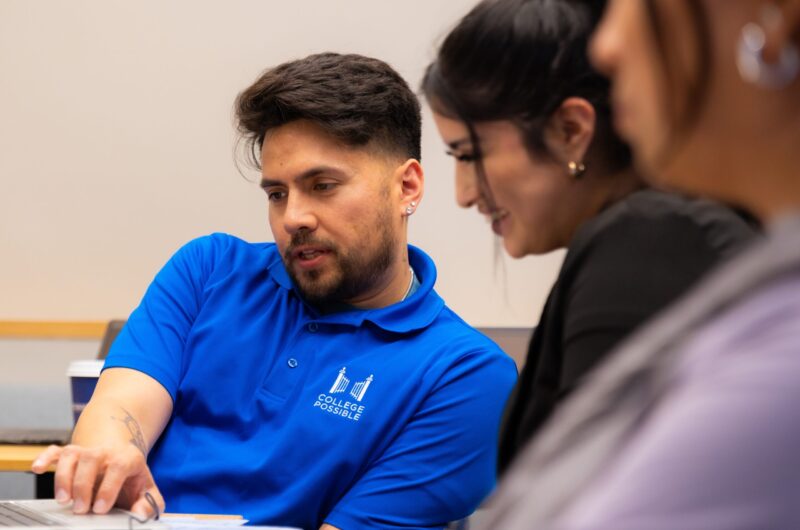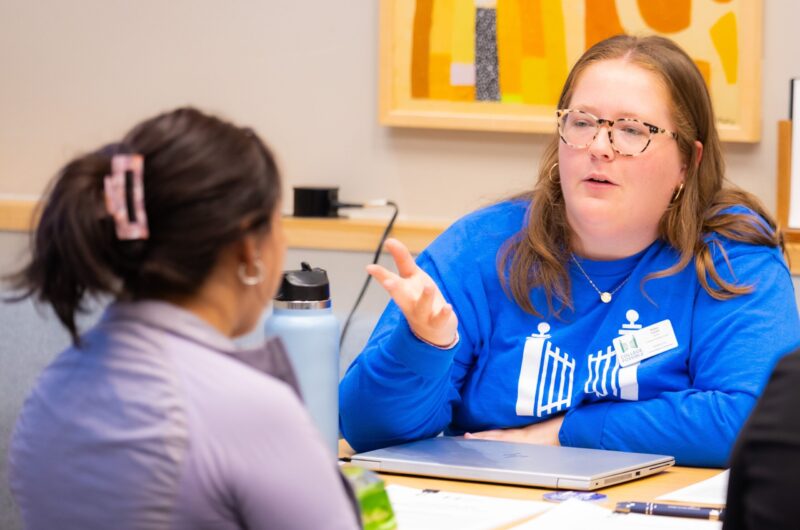There are many important factors to consider when choosing a postsecondary certificate programs, technical colleges, two-year community colleges, and four-year colleges and universities. Keep in mind that many excellent institutions are not famous for their sports teams or long history. To explore all of the college options available to you, don’t limit your college research to schools that you have heard of; instead, use some of these key areas to guide your college search.
Foundation, target and reach schools
We encourage you to consider at least six colleges and universities to include three foundation schools, two target schools, and one reach school. It is important to explore the different college options available to you in order to identify which one will align best with your career goals.
Foundation schools: Schools that you know you will get into (based on assured admittance requirements) or schools that you know you have a very good chance of getting into (i.e. SAT scores and class rank exceed requirements). Most certificate programs, technical colleges, and community colleges have open admissions, which means you’ll only need a high school diploma or GED to enroll.
Target schools: These schools should include your top choice school. Admission to a target school may not be a guarantee, or it may be a school that has open admissions. Target schools may match your career goals better than foundation schools.
Reach schools: Schools where you may not quite meet the admissions standards, and you may be taking a chance by applying, but with a strong essay and letters of recommendation, you may be accepted. Even if the school may be hard to get into, it is still good to try! Although your GPA or test scores may be lower than what they usually accept, other factors like community service, extracurricular activities, background, etc., may help you get accepted.
Academics
Majors and areas of study
One of the most important pieces of your college research is to study, in detail, whether the institution offers a program that aligns with your career goals. For example, a two-year school might have an Associate’s in Social Work, and if you look closely, this degree might focus more on working with children or more on working with adults. The difference in these programs could help decide which school’s degree path is a better fit for you!
Student-faculty ratio
It’s also important to consider faculty size when comparing doing your college research. Some large schools may have many times more students than in a small school, but they also have many more faculty members. Take note of this ratio when considering and comparing school size.
Average test scores and GPA
The average scores at a school are just that: an average. You can attend a school with higher or lower scores than the average score listed. If you have a GPA or test score that is *way below* the average score, it might be hard to get accepted, receive merit-based aid, and complete your classes. If your score is *way above* the average score, you might not find the expectations of your classes as challenging as you would like.
The campus environment
Distance and commuting
As you are researching colleges, take note of how far the school is from your house. Will you move? What would your commute look like each day? Looking at where you will live and how long it will take to get to class is helpful to see how much time and money you’ll really be spending on college per week. Commute time can be a huge factor and add a significant amount of time and logistics to your day so it is worth considering when comparing schools.
School size
Both large and small schools have their pros and cons, and which one is better will largely depend on the individual. At larger schools, you may find yourself in introductory classes with several hundred other freshmen and sophomores, but this isn’t the case for most classes. As you continue on through your degree and your courses become more major-specific, class size will grow much smaller, often consisting of 20 or fewer students.
Smaller institutions may maintain this small class size for all of the classes they offer. Large schools may also offer a more diverse offering of course topics, extracurricular activities, clubs and organizations, and sports. Smaller schools may offer a more close-knit community where everyone on campus knows you.
Public vs. private schools
You can receive an excellent education at both public and private institutions. The main difference between the two comes down to funding. Private schools are primarily funded by tuition, endowments, and donations and do not receive any federal or state funding. This means that private schools have more control over their courses, curriculum, culture, and religious affiliation. It also means that the cost of tuition can be much higher at a private school; because public schools receive federal and state funding, they often can be more affordable, but that is not always the case. You should explore both public and private school options when deciding on the school that is best for you.
Money matters
Cost of attendance
Financial concerns are a huge factor in the college research process. The cost of attendance consists of two types of expenses:
- Direct costs, such as tuition, fees, and on-campus housing. These costs can vary depending on the number of course hours you take, but they will need to be paid in order to enroll at the institution.
- Indirect costs such as books and supplies, transportation, and personal expenses will accumulate and need to be paid throughout the academic year.
After submitting a FAFSA or TASFA, the amount of financial aid you will receive will depend on your Student Aid Index (SAI) subtracted from the institution’s Cost of Attendance (COA). This formula will identify your Financial Need, and institutions can award financial aid up to the amount of your demonstrated financial need. Take into consideration each school’s Average Financial Need Met when researching good fit schools.
Student life
Student population and demographics
It is also important to consider the demographic composition of the student population when doing your college research. Attending a school with a diverse student population will enhance your learning experience. Schools that have students from a variety of backgrounds and cultures are also more likely to have communities or organizations already established where you can connect with other students from similar backgrounds or cultures as you.
Minority serving institutions (MSI)
An MSI is a college that has committed to providing higher education to minority students or students who are from a low socioeconomic background. Students who attend minority serving institutions often report a better sense of belonging among their college community. Students at these institutions are also more likely to have professors from similar backgrounds to their own and have more options to participate in cultural programs.
HBCU
HBCU is an acronym for Historically Black College or University. The Higher Education Act of 1965 defines HBCUs as “any historically black college or university that was established prior to 1964, whose principal mission was, and is, the education of black Americans, and that is accredited by a nationally recognized accrediting agency or association determined by the Secretary [of Education] to be a reliable authority as to the quality of training offered or is, according to such an agency or association, making reasonable progress toward accreditation.” HBCUs offer all students, regardless of race, religion, or sex, an opportunity to further develop talents, skills, and education.
HSI
HSI is an acronym for Hispanic Serving Institution. HSIs are schools that participate in a designated federal program that aims to assist first-generation students, who typically are of Hispanic origin.
The “wow” factor
Why are you interested in this school?
When looking at schools, try to list three things about that school that really stand out to you, personally. This might be the school’s “it” or “wow” factor that sets it apart from all other schools! It might be that you have friends or family who also attend or live nearby, it might be a certain professor that you would love to study with, or it might be something we identified above.
Next steps
Now that you’ve learned more about what types of colleges there are and what to consider when doing your college research and choosing a best-fit school, your search process can begin! There are several great tools available online to help inform your college search; we included our favorites in the College Search Tools resource.
Check out College Forward’s Rising Senior Summer Task List if you are a current high school junior interested in additional steps you can take to prepare for applying to a postsecondary school.



